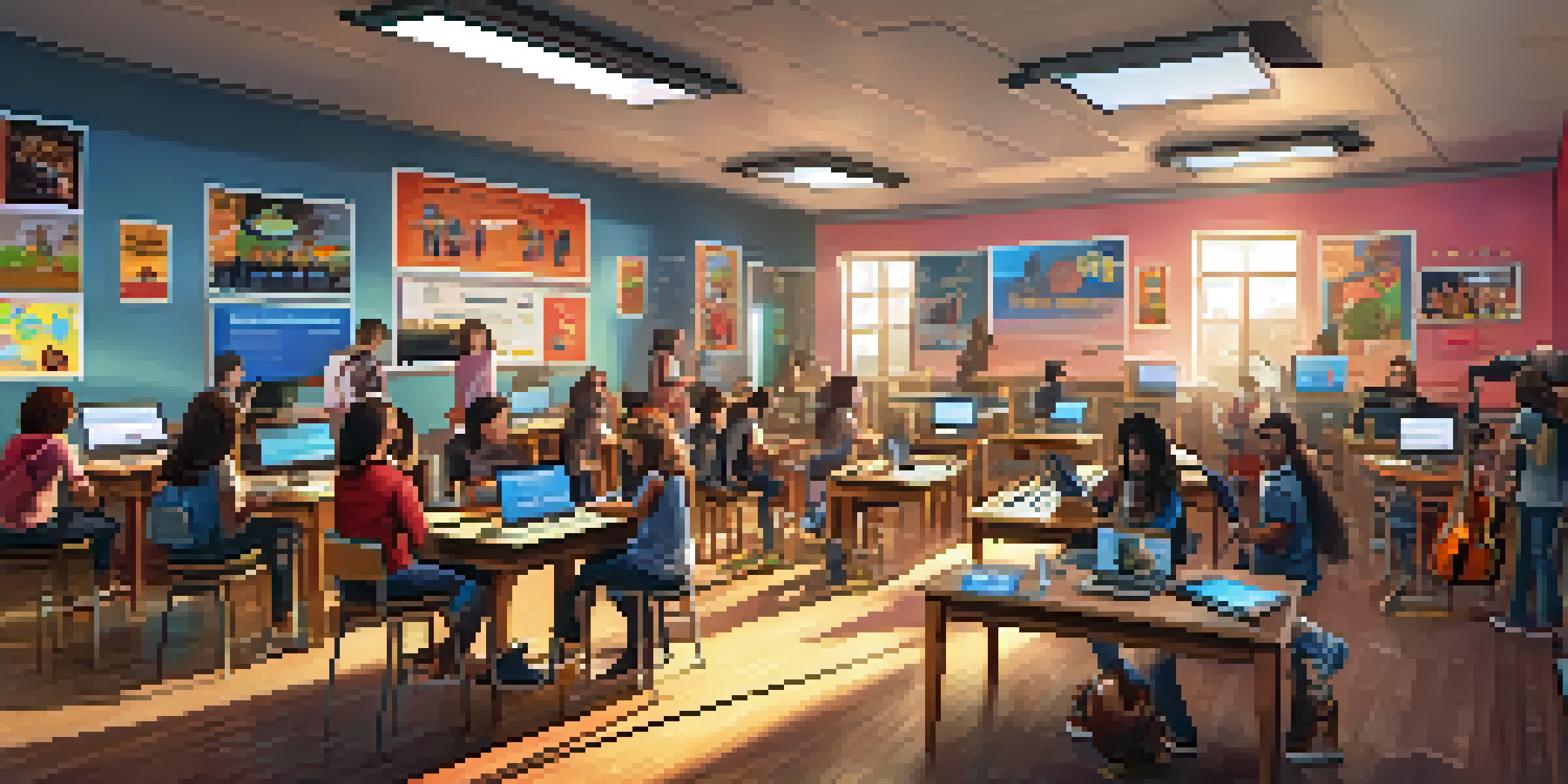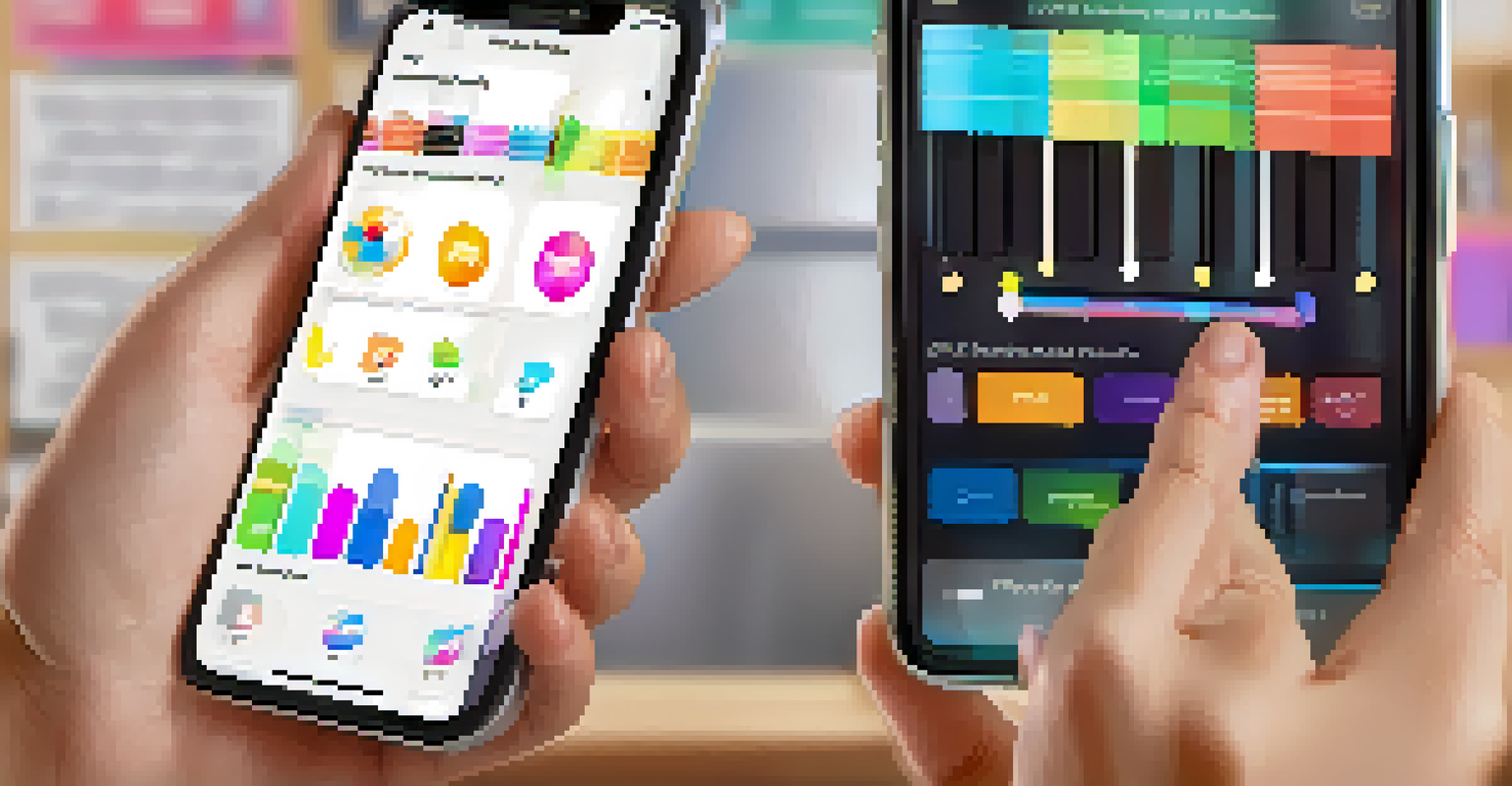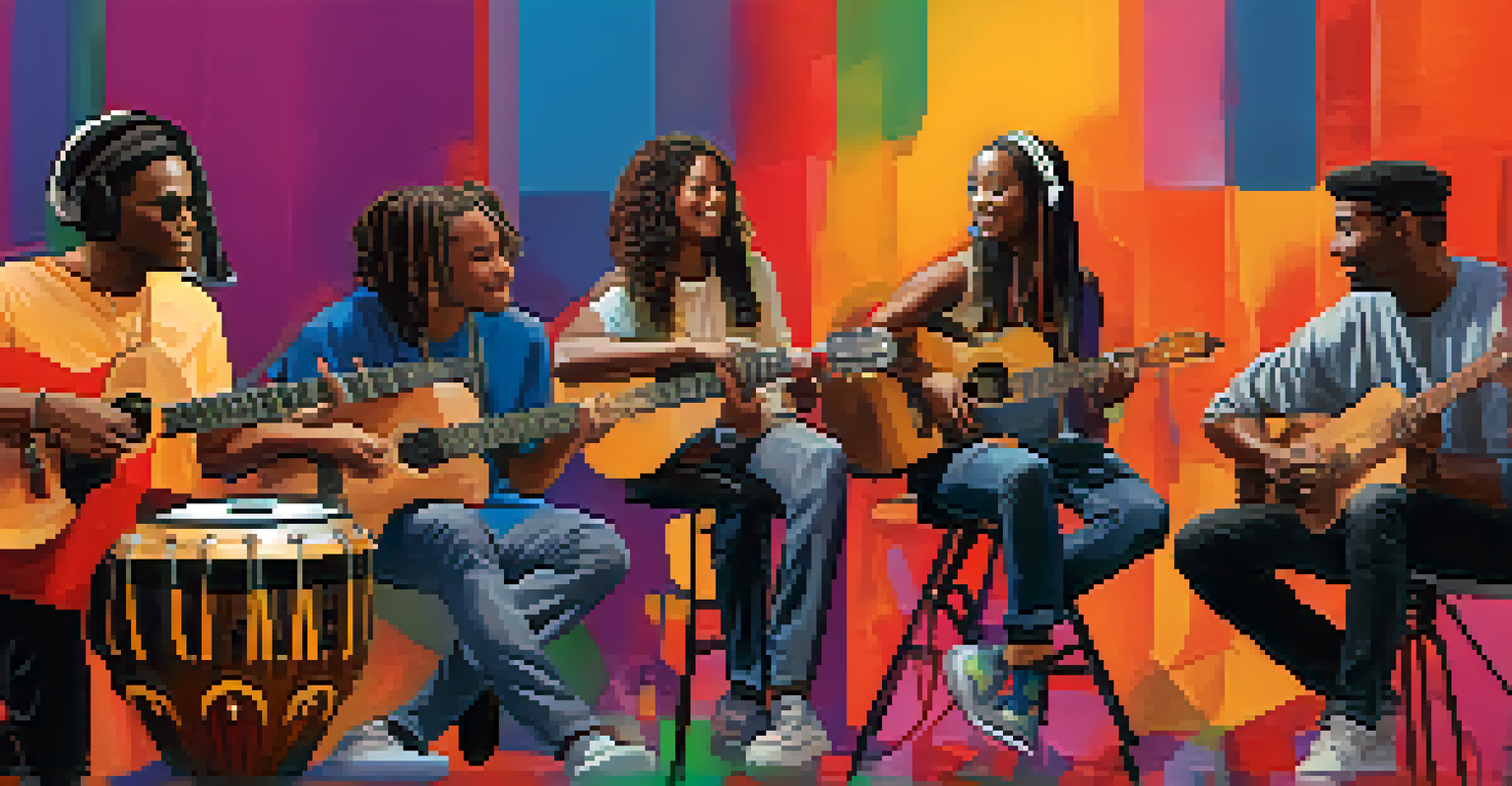The Effect of Digital Media on Music Education and Learning

The Shift from Traditional to Digital Music Education
The landscape of music education has significantly changed with the advent of digital media. Traditional methods, which relied heavily on face-to-face instruction and physical resources, are now supplemented by various online platforms. This shift allows students from diverse backgrounds to access high-quality music lessons without the constraints of location or travel.
Music education is not just about learning notes on a page; it's about discovering a passion and connecting with others through the power of music.
Digital tools such as video tutorials, online courses, and interactive apps have made learning music more engaging and accessible. For instance, platforms like YouTube offer countless tutorials that cater to different skill levels, enabling learners to progress at their own pace. This democratization of music education means anyone with an internet connection can learn an instrument or develop their musical skills.
Moreover, the integration of digital media fosters a more personalized learning experience. Students can select resources that align with their interests and learning styles, making it easier to stay motivated. As a result, digital media not only enhances the learning experience but also encourages a lifelong passion for music.
Enhancing Collaboration Through Digital Tools
Digital media has revolutionized collaboration in music education, allowing students to work together seamlessly, regardless of their physical location. Tools like Google Drive and collaborative software enable musicians to share compositions, provide feedback, and create music collectively in real time. This sense of community enriches the learning experience and encourages students to engage with their peers.

For instance, platforms such as Soundtrap and BandLab allow students to record, edit, and produce music collaboratively. These tools not only foster creativity but also teach students essential skills in teamwork and communication. They can experiment with different genres and styles, learning from each other in a supportive environment.
Digital Tools Enhance Music Learning
The integration of digital media in music education provides students with engaging resources and personalized learning experiences.
Additionally, online forums and social media groups provide spaces for musicians to connect, exchange ideas, and seek advice. This network of collaboration is invaluable for music students, as it broadens their perspectives and enhances their understanding of various musical concepts.
Access to a Wealth of Resources Online
One of the most significant benefits of digital media is the vast array of resources available to music educators and students. From sheet music and instructional videos to interactive apps, the internet offers an abundance of materials that can enhance the learning process. This wealth of information allows students to explore different genres, techniques, and cultures in music.
The beautiful thing about learning is that no one can take it away from you.
For example, websites like IMSLP provide free access to a vast library of sheet music, making it easier for students to find the pieces they want to learn. Additionally, educational platforms like Coursera and Udemy offer structured courses taught by professionals, allowing students to gain insights from industry experts. This variety encourages learners to experiment and find their unique musical voice.
Moreover, digital libraries and streaming services enable students to listen to a diverse range of music. Exposure to various styles helps them develop a well-rounded understanding of music, inspiring creativity and innovation in their own compositions.
Interactive Learning Experiences with Apps and Software
The rise of music education apps has transformed how students learn instruments and music theory. Applications like Yousician and Simply Piano offer interactive lessons that provide instant feedback, making practice sessions more effective and enjoyable. This gamification of music learning keeps students engaged and motivates them to improve their skills.
Additionally, software like GarageBand allows students to explore music production, enabling them to create their own compositions using digital tools. This hands-on experience empowers learners to experiment with sound and develop a deeper understanding of music creation. As they navigate these platforms, they also build technical skills that are essential in today’s music industry.
Collaborative Music Creation Online
Digital platforms facilitate collaboration among musicians, allowing them to create and share music together regardless of their location.
Furthermore, these apps often include features that track progress and set goals, helping students stay accountable and motivated. The interactive nature of these resources makes learning music less daunting and more accessible to everyone, regardless of their prior experience.
The Role of Social Media in Music Learning
Social media platforms have become essential tools for music education, offering students the chance to showcase their talents and receive feedback from a global audience. Platforms like Instagram and TikTok allow aspiring musicians to share their performances, connect with other artists, and gain valuable insights from experienced musicians. This exposure can inspire learners and encourage them to refine their skills.
Moreover, many music educators use social media to share tips, tutorials, and resources, creating a supportive online community for students. This accessibility to expert knowledge can help demystify complex concepts and provide encouragement along the learning journey. It emphasizes the importance of continuous learning and adaptation in the ever-evolving music landscape.
Additionally, social media fosters a sense of belonging among music students, allowing them to find their niche and connect with like-minded individuals. This sense of community can be incredibly motivating and can lead to collaborative projects, further enriching the educational experience.
Challenges of Digital Media in Music Education
While the impact of digital media on music education is largely positive, it does come with challenges. One significant concern is the potential for information overload, where students may feel overwhelmed by the sheer volume of resources available online. This can lead to confusion and frustration, making it difficult for learners to focus on their goals.
Another challenge is the lack of personal interaction that comes with online learning. Face-to-face instruction allows for immediate feedback and personal connection, which can be difficult to replicate in a digital environment. This absence can lead to feelings of isolation among students, affecting their motivation and engagement.
Challenges of Digital Music Education
Despite its benefits, digital music education faces challenges such as information overload and unequal access to technology.
Moreover, not all students have equal access to technology or a stable internet connection, which can create disparities in learning opportunities. Educators must address these challenges to ensure that all students can benefit from the advantages digital media offers.
The Future of Music Education in the Digital Age
As technology continues to evolve, the future of music education looks promising. The integration of virtual reality and augmented reality into music learning could revolutionize how students experience music. Imagine being able to practice an instrument alongside a holographic teacher or participating in virtual jam sessions with musicians from around the world!
Moreover, advancements in artificial intelligence could lead to personalized learning experiences tailored to each student's unique needs. AI-driven platforms could analyze a student's progress and recommend specific exercises to help them improve. This level of customization could make learning more efficient and enjoyable.

Ultimately, the fusion of digital media and music education creates endless possibilities for innovation and creativity. As educators and students embrace this digital age, they can work together to shape a future where music learning is accessible, engaging, and inspiring for all.